A Trek to Prevent Iceland's Apocalypse
In the remote Icelandic highlands, two filmmakers face a dilemma when they realize their 14-day trek across the land they are trying to protect will take twice as long as they planned.
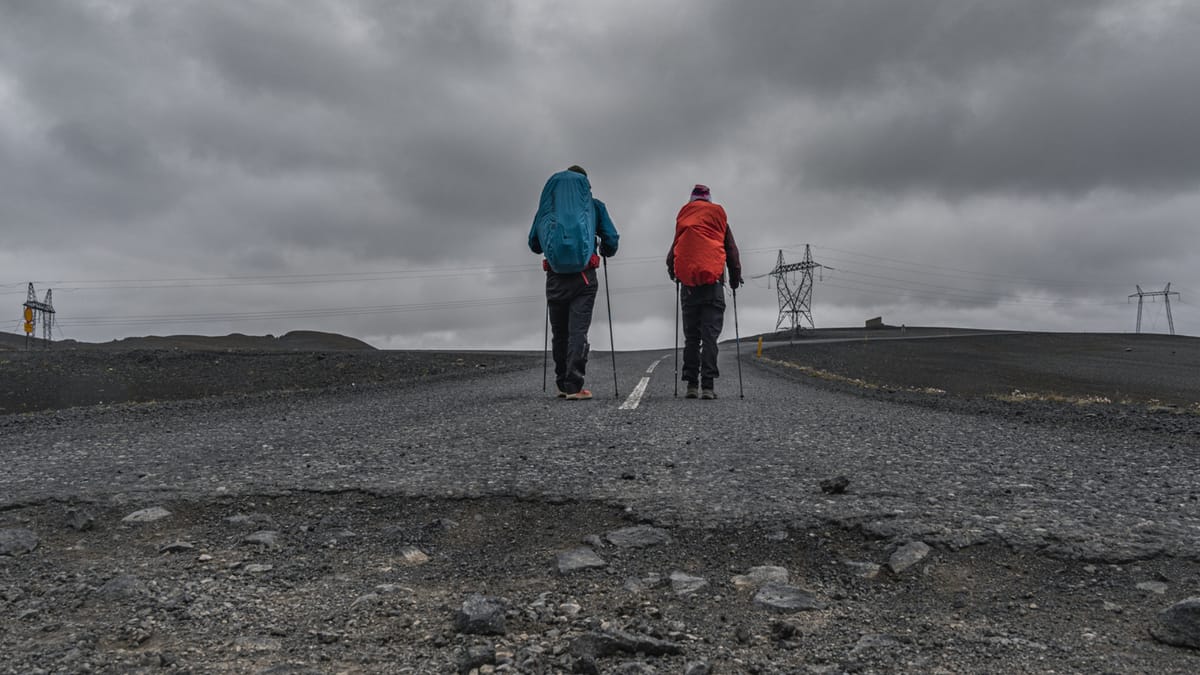
A giant army of 200-foot tall steel lattice towers is marching across Iceland.
Like “the nothing” from The Neverending Story, Iceland’s hydroelectric industry is sweeping the nation, indiscriminately destroying any and all pristine nature in its path.
Ryan Richardson and his wife Hailey, two filmmakers from Western Canada, committed to trek across Iceland in an attempt to force the government to protect the highlands region, an area of over 40,000 square kilometers, by granting it national park status. (Listen to the podcast episode here).
[buzzsprout episode='1834138' player='true']
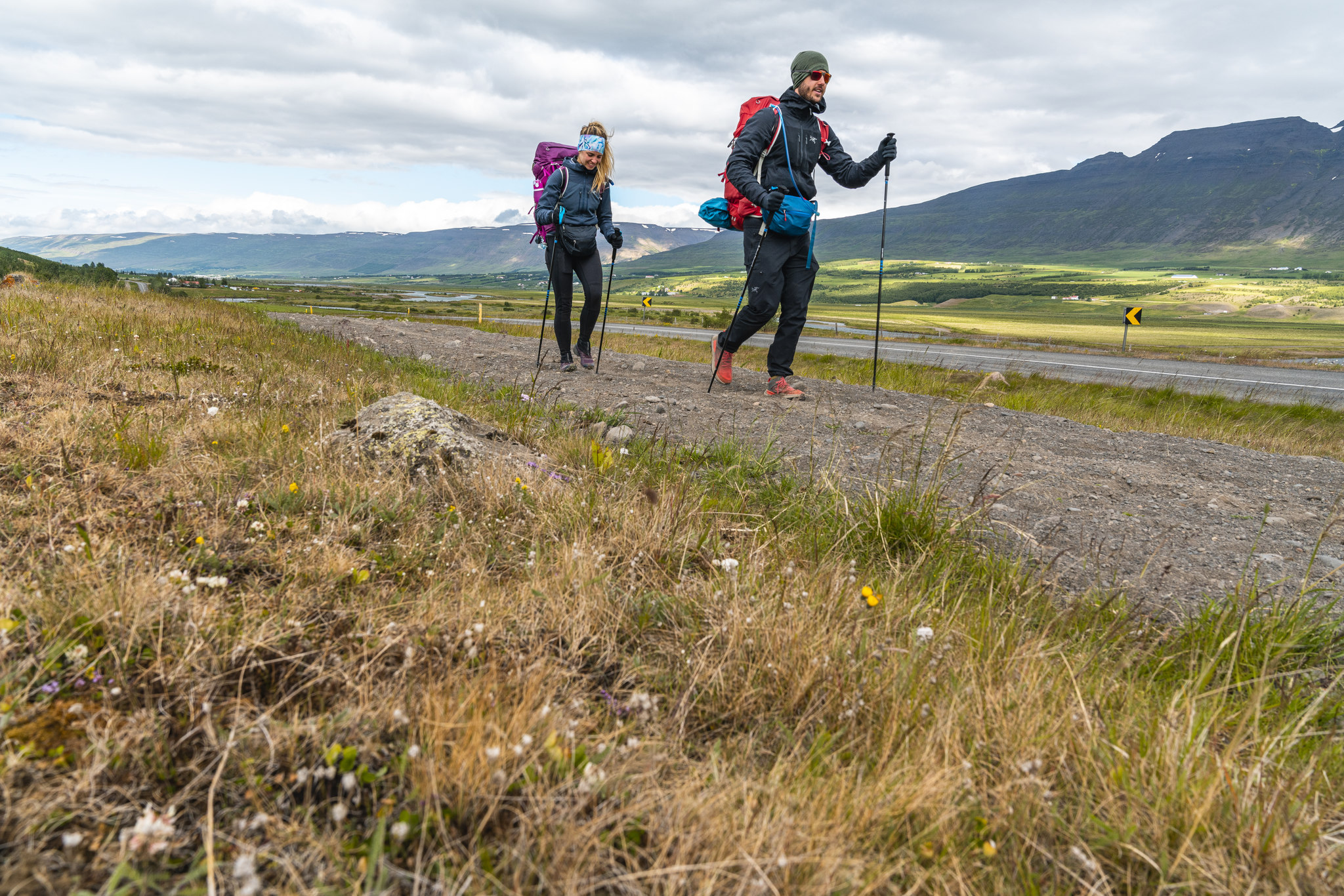
“Some of the places we were walking through this year will not look the same next year. They’ll be completely scarred with hydro development and it'll be like the difference between walking through a beautiful desert glacial oasis and then walking through a World War Z post-apocalyptic scene of nothingness.”
Their intended route, from the northern tip of the island to the south, would cover 230 km, and deviate wildly from the areas where most tourists visit on holiday. However, they faced a serious survival dilemma on day one, when Ryan noticed that after 42 km of hiking, they were still only halfway to their first waypoint. Because the remote highlands are so untouched and even unmapped, the satellite data they based their route on was 40% wrong. When Ryan and Hailey realized that they would now have to traverse over 400 km to achieve their goal, they decided between cutting their food rations in half and doubling their daily mileage - quitting was never an option.
“No other experience could have helped us prepare for this in any way, shape or form. You're suffering to a degree you've never suffered before.”
Ryan and Hailey operate their own small-footprint film production company, Life Outside Studio, in which they actively participate in film projects around the world from swimming with wild orcas in Norway to ultra-running across the Namibian desert. However, nothing could prepare them for the sheer scale and suffering of their 14-day trek across Iceland. While the South Highlands is an international hiking destination, Ryan and Hailey trekked through utter isolation up north for the first nine days of the journey, battling relentless rains and sub-zero temperatures at altitude. One slip up while fording a sub-zero glacial river, and hypothermia becomes a real threat.
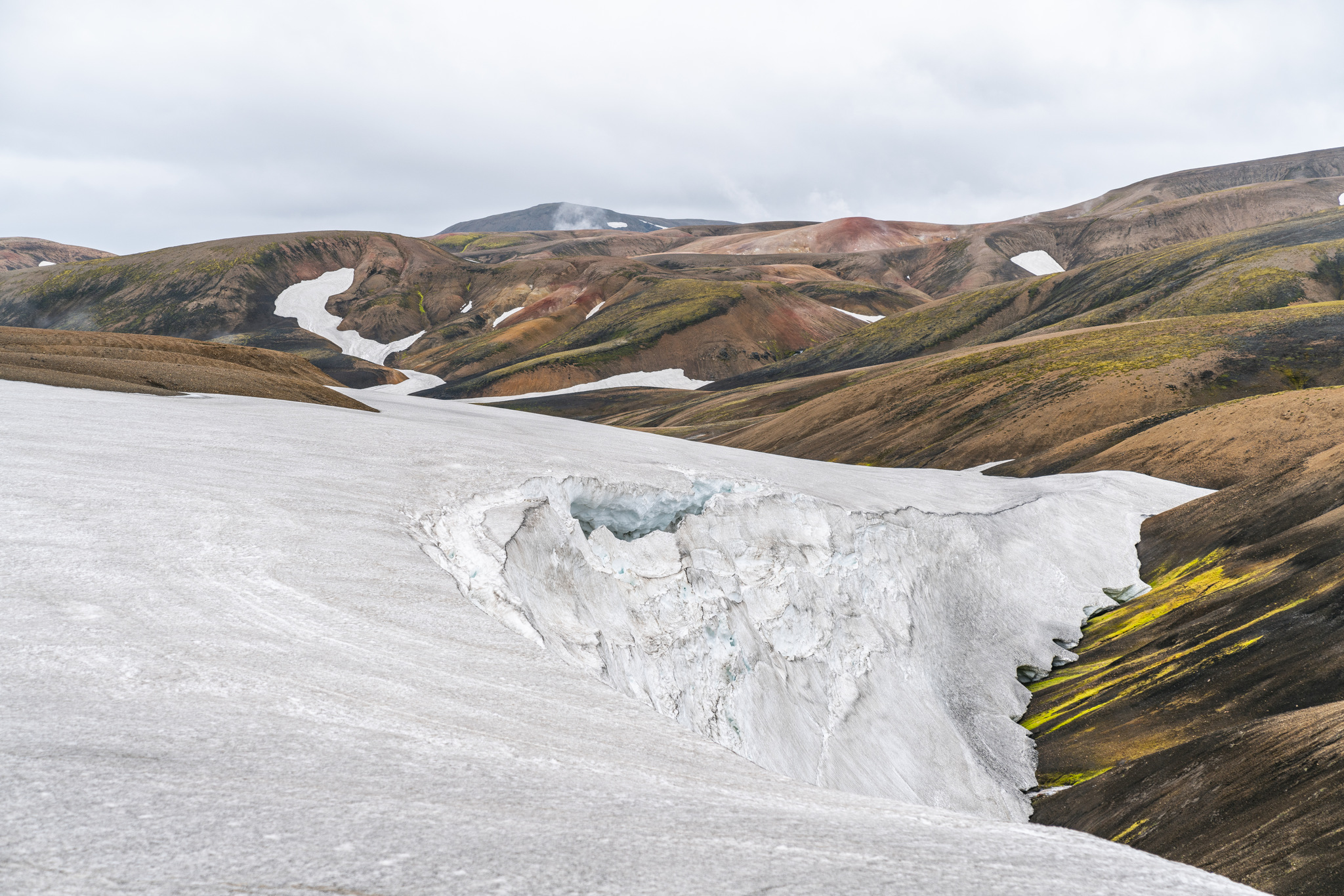
"You're becoming part of the landscape that you're moving through. You could smell rivers and streams before you could hear them or see them because your senses were just so heightened."
Ryan and Hailey earn their stories, and with their grueling trek across Iceland, they’ve earned our attention in helping to protect the beautiful highlands, the largest remaining uninhabited area in Europe. They filmed their experience and plan to release the final product at outdoors festivals this fall. You can watch a sneak peek of their journey in the trailer below.
https://www.youtube.com/watch?v=mfQh9YMPi0k
After completing their goal, blisters and all, Ryan and Hailey returned to Canada with a new sense of awe for the untapped potential of mental strength and grit that lies dormant, not just in themselves, but in all humans.
"Everything that those guys like Rich Roll and David Goggins say about putting your mind to something is true. Although your body feels finished, there's so much more gas left in the tank."
The Outdoor Journal connected with Ryan just days after completing the trek to discuss why saving Iceland’s Central Highlands is worth 14 days of suffering, how to craft a film out in the remote wilderness and utter isolation, and the lessons he learned about his own untapped potential and the human spirit. (Listen to the full podcast episode here).
[buzzsprout episode='1834138' player='true']
A SIGN FROM THE UNIVERSE
TOJ: Can you describe exactly where you were when this initial idea came about to do an expedition across Iceland?
Richardson: We had just finished a project in Norway in November 2018 and we were on our way home, flying from Reykjavik, Iceland to Toronto, Canada. We were flying with Wow Air and they had this educational pamphlet about the Highland National Park. It was the first time I'd heard anything about it. I was really interested because I'd been to the highlands area quite a few times and I knew, for the most part, that in 40,000 square kilometers of it, probably about 2% of it was protected.
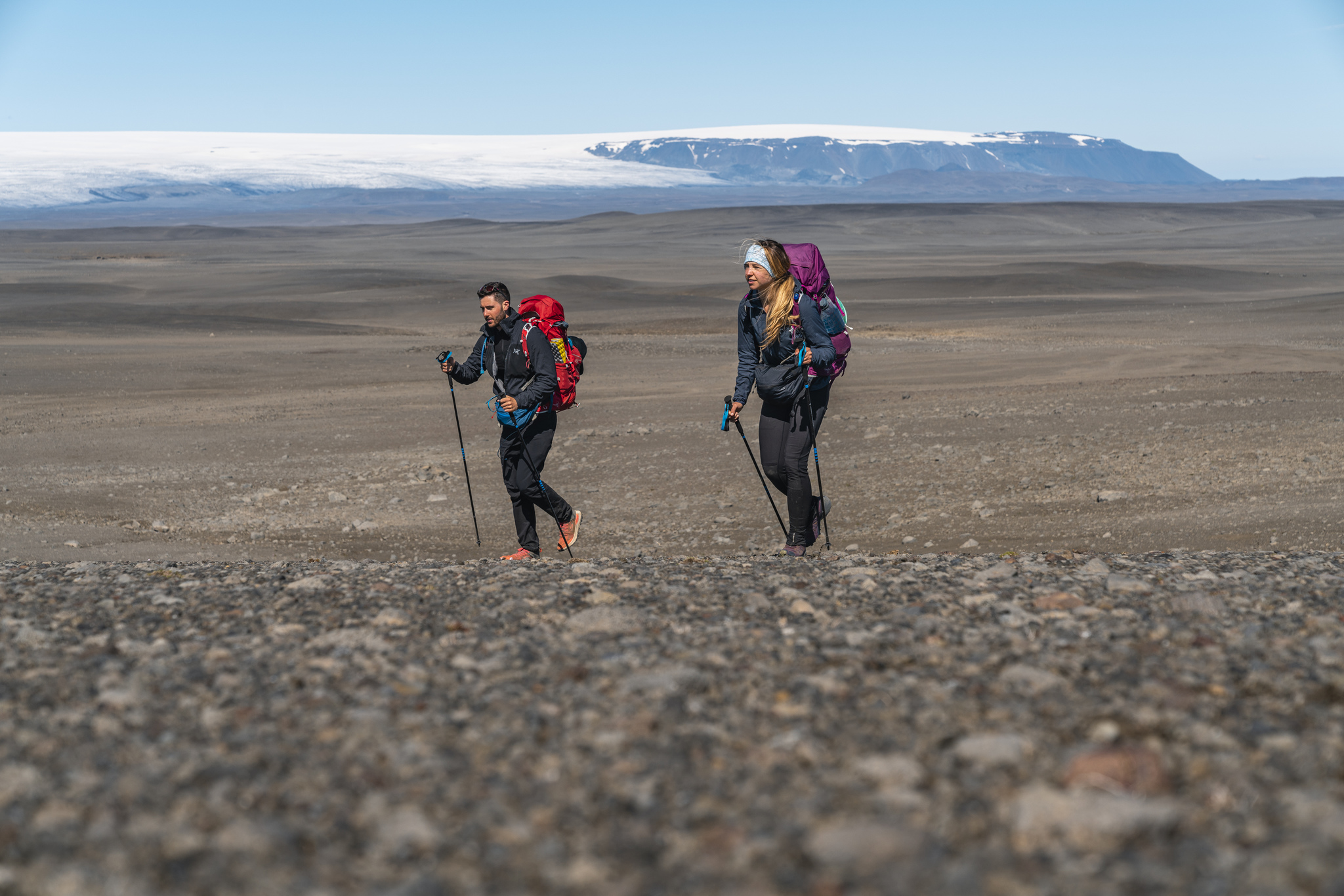
It's pretty evident when you get there. There are lots of people ripping around on these massive jeeps and cruising overland and there's little regard for plant life or flora.
So I thought it was pretty interesting in reading about this project that they wanted to implement a national park to protect this entire area. I tucked the pamphlet in my pocket and when I got home, before I even looked at my Norway project footage, I contacted the guys that were organizing the initiative and said I'd love to get involved with this.
"You know that out of 7.5 billion people on the planet, you're the only two people having this experience in nature all to yourself."
Hailey and I, because we've been on a couple of adventures to Iceland, thought we should do something crazy to get attention or some kind of traction. So we decided to cross the country on foot. We've never done anything like that. And what better way to captivate and share the experience of Iceland in the highlands than by walking through it? Instead of being a passenger through a window, we’d experience every bit of the landscape. Especially when some of the places we were walking through this year, next year will not look like how they looked this year. They’ll be completely scarred with hydro development and it'll be like the difference between walking through a beautiful desert glacial oasis and then walking through a World War Z post-apocalyptic scene of nothingness.
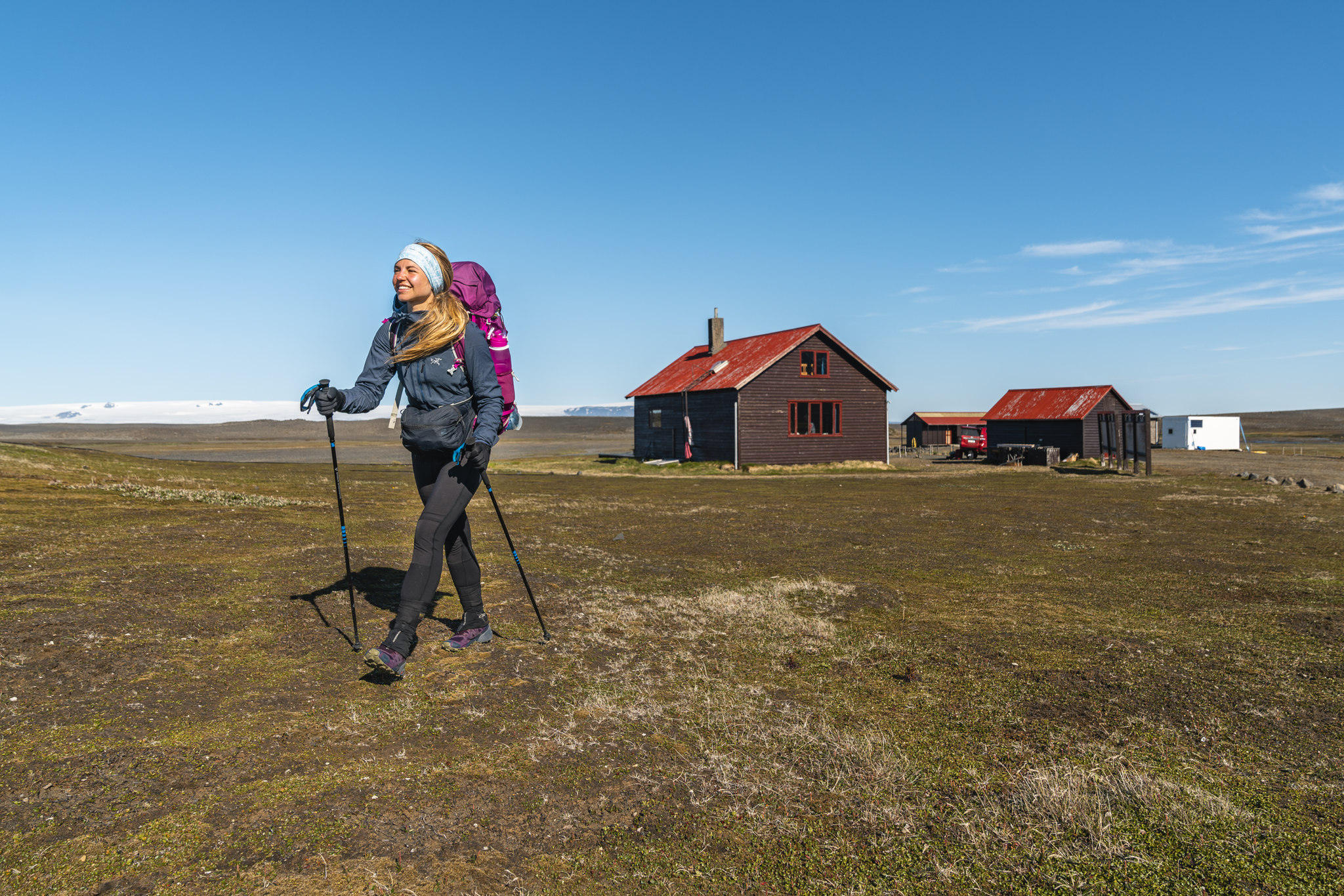
One of the most impactful visuals from our trip was on this gravel to paved road at 65 degrees North, almost in the arctic. It feels so ominous because there's a dam to the left with like 400 lines connecting to 200 feet tall pylons dotting the skyline. And there’s no one around for a hundred kilometers, but there are these perfectly paved city streets everywhere that they use for maintenance access on these pylons. What a shame!
TOJ: You've done a lot of traveling on other assignments to places like New Zealand and Africa where you had to push your comfort zone, but how big of a leap was it committing to over 400 kilometers of hiking?
Richardson: It was the biggest leap ever. No other experience could have helped us prepare for this in any way, shape or form. It was so outside of our comfort zone that it was unlike anything to compare it to you because we were pushing our own physicality a hundredfold beyond what we thought we were capable of, but we were trying to film at the same time. We've never walked 50 kilometers in a day with backpacks on before. You're suffering to a degree you've never suffered before, but you're also trying to tap into your creative brain and still get these really scenic shots of you walking along a waterfall or fording a river and crossing to the other side.
TOJ: Did you guys do any training to break in your gear and test what your limits might be?
"It was kind of like stretching before the fight of your life."
Richardson: What we did, which was probably the most critical element, was a dry run on the east coast trail of Newfoundland. We spent seven days on the trail and, more than anything, it prepared us for what our food situation was going to be like so that we could plan accordingly and also figure out the flow of how hiking and media would work in tandem. It was kind of like stretching before the fight of your life. It doesn’t prepare you in any way. it just helps get the blood flowing.
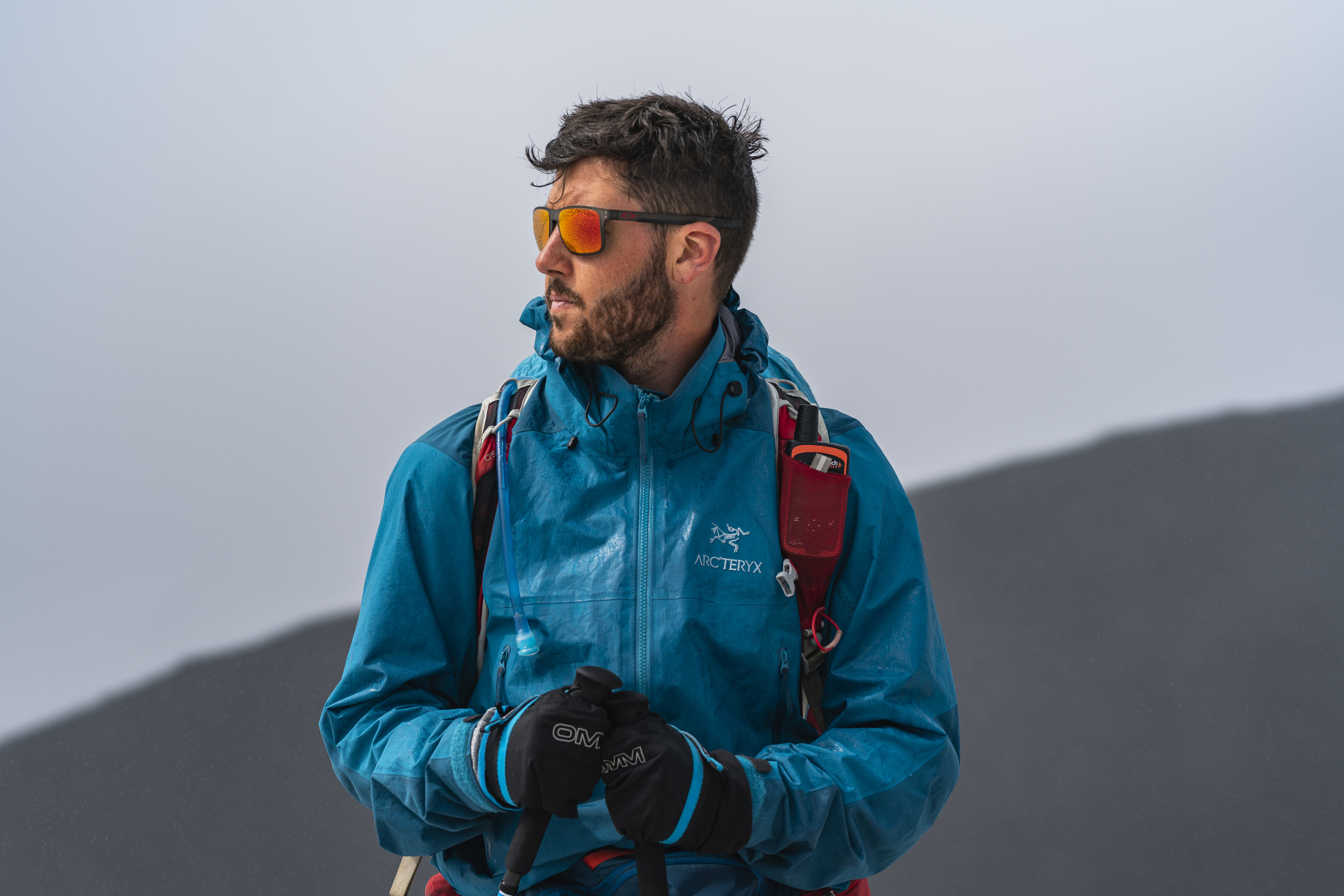
THE HUNGER DILEMMA
TOJ: How much experience did you have trekking and hiking in Iceland and how much scouting did you get a chance to do?
Richardson: The biggest problem for us was the fact that there are no maps of any of these areas. And there's basically no data we could find on the kind of route that we wanted to go through. We were completely in the dark. So we based our route off of Google Earth, which told us it was going to be 230 kilometers from north to south.
"I couldn't conceivably think of anything more difficult or challenging to physically go through."
But, on the first day, we had hiked 42 kilometers and I looked on our GPS, but we were only halfway to our first waypoint. I knew there was something wrong. The satellite tracking, compared to our expected route, was off by about 40%. So, instead of doing 230 kilometers that we had prepared for, we did 420 kilometers in total. It made everything infinitely more difficult.
TOJ: So on that first day when the realization sinks in that you're going to have to do so much more, what kind of conversation is happening between you guys? Are you recalibrating your expectations or maybe even thinking about stopping just as you had gotten started?
Richardson: It was the first day when we had that realization that we were potentially in for about twice the amount of mileage that we thought we were going to have to do. But we were in it. We’ve taken flights, we have the food on our backs, we have a decision to make. Do we ration food and instead of doing this for 14 days, we do it for 28 days, or do we consolidate all the days and put two days into one every day. We had a conversation and we decided that we would rather be on our feet twice as long and not be hungry, than have to be hungry for a month and ration food. Those were our options. We never thought about quitting.
TOJ: I've interviewed several explorers who journeyed across Antarctica this year and it seems like for the first nine days or so, you were experiencing a similar sense of isolation before you got to the more popular trails in the latter half of the trip. Did you feel scared or did you feel exhilarated by the fact that it was just the two of you out there alone?
Richardson: It was totally exhilarating. On the first day, we walked through basically farmland getting up to the highlands so it didn’t feel very remote. And then the next day we started gaining elevation pretty quickly, but it still felt like hiking through Colorado. But then on the third day, you pass this remote mountain hut and there's basically nothing for the next week and you know that you're totally in it. If you were a painter, you couldn't have painted more beautiful scenes with the midnight sun setting between two glaciers and then rising all at once as it just touches the horizon. And, you know that out of 7.5 billion people on the planet, you're the only two people having this experience in nature all to yourself.
Read next on TOJ: Running For My Son’s Life - Featuring a short film by Ryan Richardson
SILENT MEDIA COVERAGE
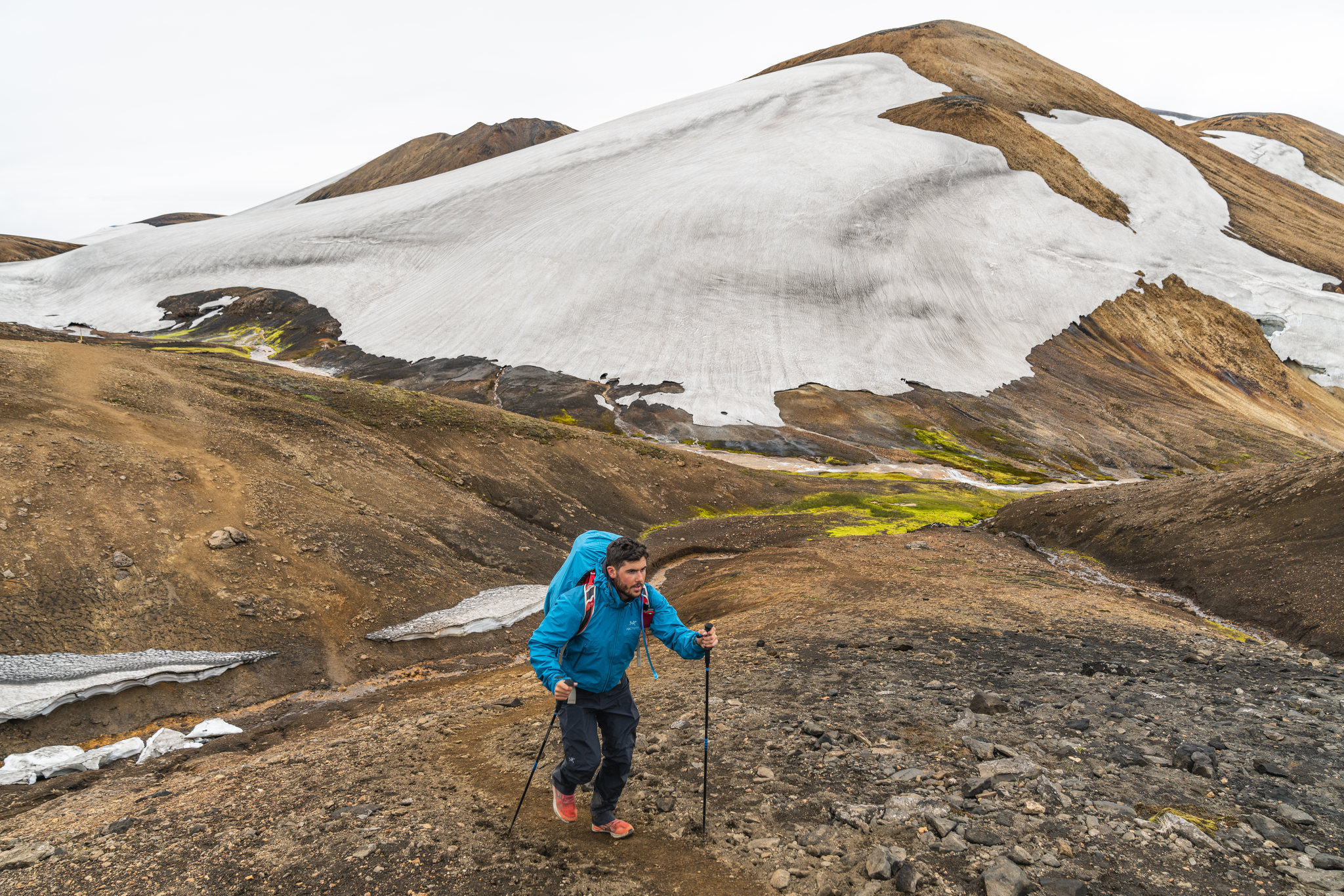
TOJ: You titled your latest blog post “Breaking the Silence.” I'm wondering why do you think that there's so little coverage about the fate of Iceland’s Central Highlands?
Richardson: The fact that there is so little coverage is exactly the scary thing because the hydro companies are taking advantage of that and trying to mobilize and develop right now because no one's talking about it. When the Highlands National Park Initiative has had more support with the government more on board, these hydro companies stay quiet and they just pray and wait on their opportune moment. In speaking with some of the local wardens in neighboring national parks, there's this undertone that they're going to take advantage of the next year or two while nobody's talking about it.
[vimeo 157900805 w=640 h=360]
What is a National Park from Einar Bergmundur on Vimeo.
CALL TO ACTION
TOJ: What sort of calls to action are you encouraging our readers to take? Should they sign a petition or should they donate or should they travel to Iceland themselves?
"The whole point of this was so that we could share this experience with as many people as possible, otherwise it was just a miserable vacation."
Richardson: The most important thing at this stage is for people to share, talk about it and educate. There's a lot of people going to Iceland and about 90% of those people, for the most part, are staying in downtown Reykjavik, which is crazy. And then the next 9% will go an extra hour and a half down to the south coast, seeing a bunch of stops along the way. And then 1% will drive around the rest of the country. There's a very small amount of those people that are traveling from North America and Europe who are actually getting into the highlands and exploring. The more people that see how accessible it is and how beautiful it is and that there are so few places left in the world where you can do that, it’s worth stretching your comfort zone for.
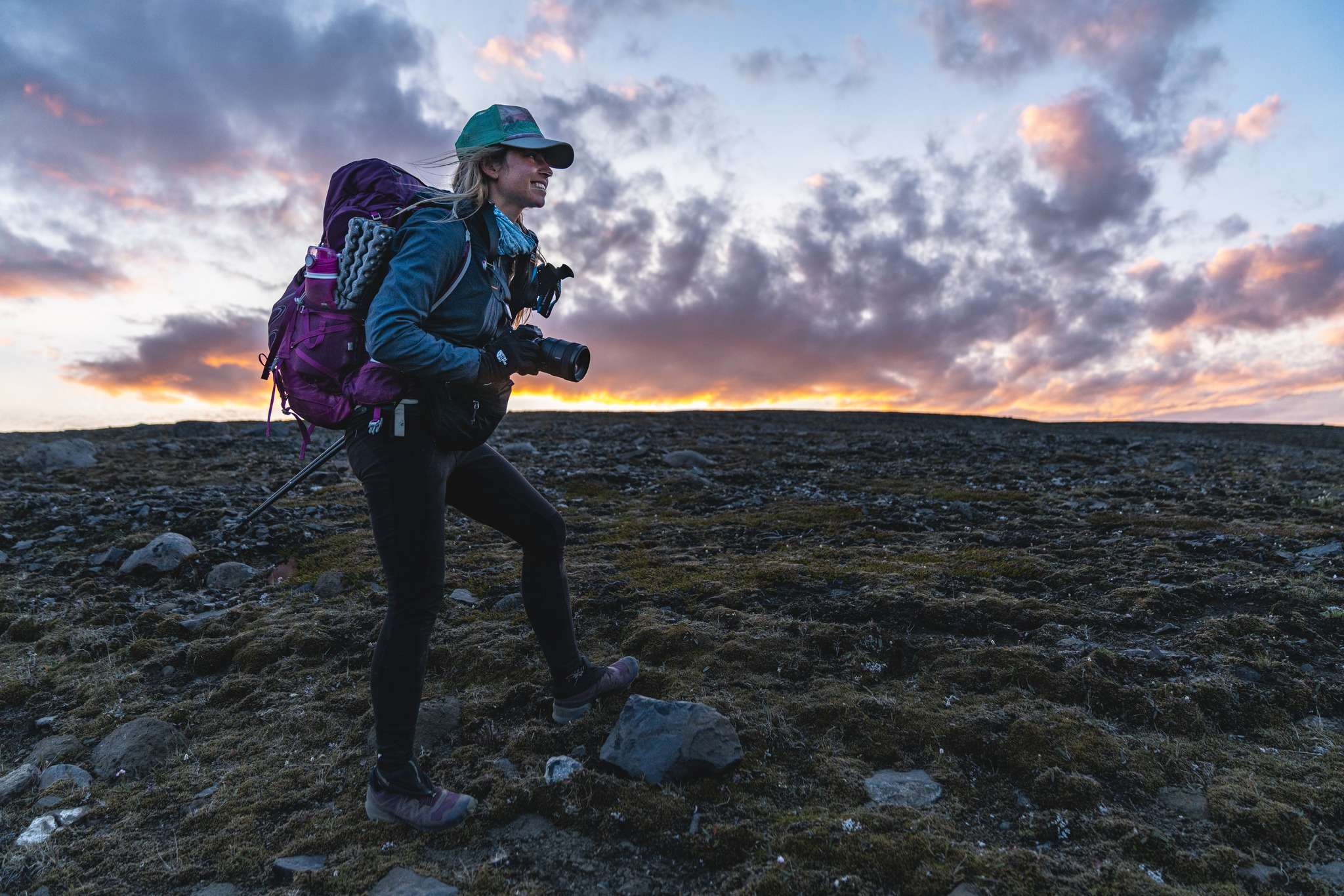
UNIVERSAL UNTAPPED POTENTIAL
TOJ: During one of your lowest moments when you were suffering from so many blisters and even thinking about quitting, you said that some advice from your mom really helped, which was to never quit at night, to get some rest and reassess in the morning. Is your mom an accomplished adventure as well or is that just "Canadian wisdom?"
Richardson: (Laughs) Don't forget, most Canadians live in Toronto, it's just like New York City. My mom is a pretty wild adventurer. I definitely admire her and look up to her. She does objectives that I don't think that I could ever do. But I think that obviously, this project changes that thinking a little bit because it totally opened my mind to think what people are capable of. If you stick to that mantra at night when you are feeling your lowest, then you wake up when the Sun is out with a different mindset.
TOJ: I heard that you commented to Hailey on the journey, “We earn our stories now.” And I thought that was just the coolest ethos or tagline for Life Outside Studio - we earn our stories.
"You're really becoming part of the landscape that you’re moving through."
Richardson: I remember that exact moment. The storms were coming in all around us on day three when we were heading into the highlands. I knew that we weren’t going to have to exaggerate how hard our journey was when we got home. No, it was actually the hardest thing every single day, for 14 days straight. I couldn't conceivably think of anything more difficult or challenging to physically go through.
TOJ: Aside from your camera, was there one piece of kit or gear that really turned out to be the most essential piece or something that you couldn't do without?
Richardson: The Garmin inReach. I don't think that you could do a project without a satellite device like that. Being able to receive messages from home, having your brother or your sister say, “Hey, so proud of you,” when you're out there and you're emotionally distraught was a huge help. It'd be tough to go and do a project without being able to communicate with loved ones at all. Aside from that, from a safety standpoint, if we didn’t have proper waterproof layers, we probably wouldn’t be having this conversation right now.
TOJ: What was it like in those remote areas where you got to fill up your water bottle with the fresh Icelandic glacial water and drink it?
Richardson: Globally speaking, there are very few places where you don’t have to wonder where your water is coming from. It's just the tastiest thing. And it was all part of the experience of being connected and experiencing and indulging with nature and not just being like a passenger, but really becoming part of the landscape that you're moving through. You could smell rivers and streams before you could hear them or see them because your senses were just so heightened. You're getting so in tune with moving through these landscapes. You were so hypersensitive and aware of the nature that you were in.
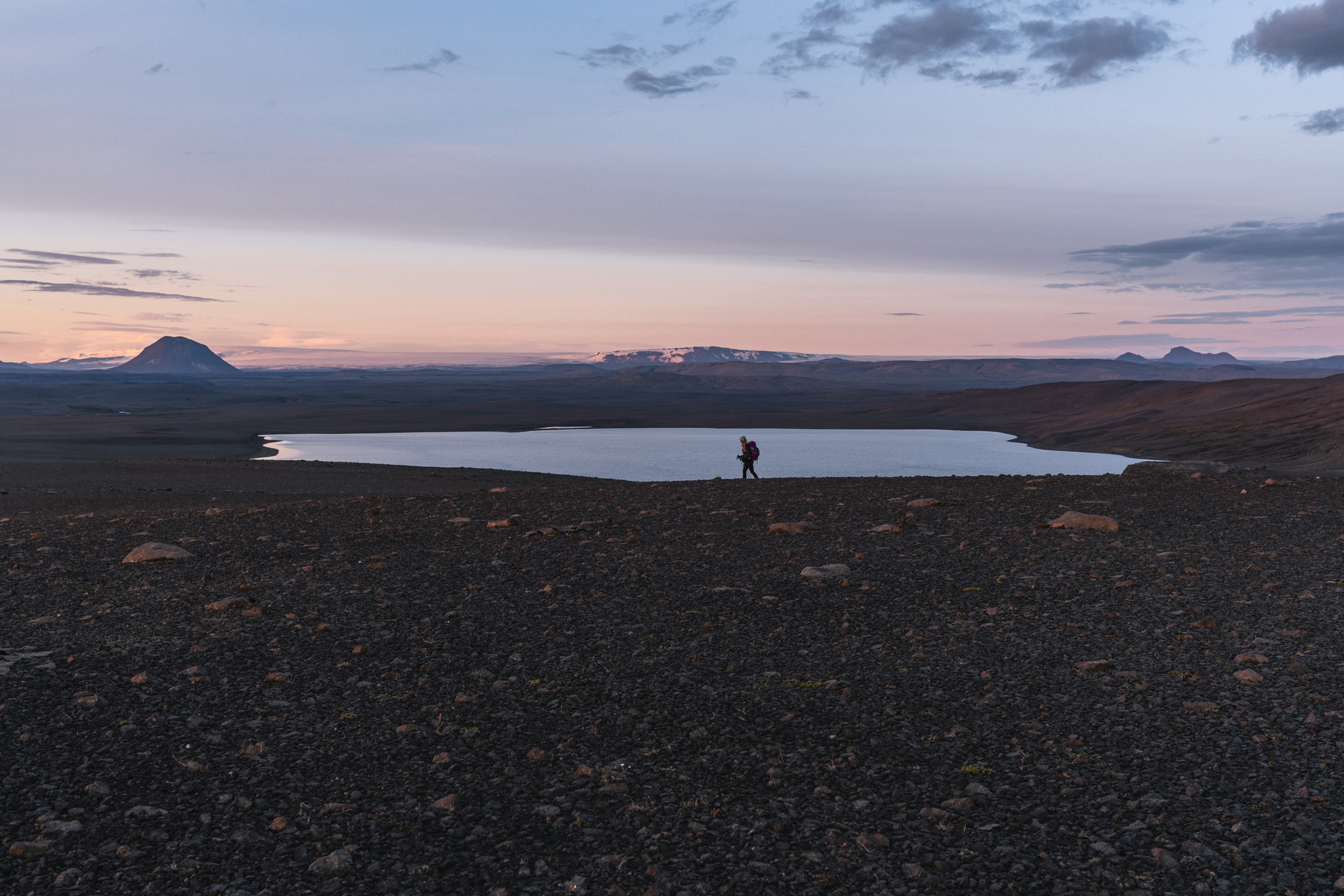
LIFE OUTSIDE STUDIO
TOJ: You just returned from your 14-day, 420-kilometer trek across the entire island of Iceland, which ended up being twice the mileage that you had planned for, and you suffered some near expedition-ending blisters, how is your recovery going?
"I just wanted to have complete creative control."
Richardson: I’m back in Western Canada. We're just working on a project in the interior of British Columbia. We flew here almost in a tuck and roll from Iceland. So just finished our 420-kilometer walk, and then within five days, we were back out here shooting a trail running project. It's a heli-access trail running, ridge running program. So we’re back on our feet and running with camera equipment already. Literally, the second day into this program, I lost like my third toenail since the Iceland project started. I'm like, “Oh man, I need a vacation.”
TOJ: As someone who enjoys shooting and editing myself. I'm curious to know, how did you go from being passionate about photography as a hobby to actually creating your own media house with Life Outside Studio?
Richardson: For me, it was the only option I had (laughs). I didn't want to just join a different production company and then follow someone else's vision. I really wanted to pursue stories that I was passionate about and creating Life Outside Studio was the only way that I saw that as actually ever being feasible. I just wanted to have complete creative control. It sounds narcissistic to put it into words like that, but what it comes down to is being able to say yes and no to the stuff that you really care about.
TOJ: Were you looking to start a career that you could do alongside with your wife, Hailey?
Richardson: It was opportunity meeting timing. We just realized that we enjoyed working on projects together. Hailey is strong in areas that I lack or have a weakness. We complement each other really well on projects and I don't think we could have predicted that or forecasted that in any way.
TOJ: Once you got home with all this footage from 14 days of trekking, what was your process for organizing it all and reviewing it and crafting it into a story?
“Had we known it was going to be over 400 kilometers, we wouldn't have even done it.”
Richardson: I try to look at everything as objectively as possible from an editor’s point of view, completely removing myself from the capturing of it. Hailey’s really good at looking through the eyes of the viewer who knows nothing about the subject. We’re hoping to stay as true as possible to the entire experience, and keep it as raw as possible too because I think that's the whole beauty of the project. It's not like we are walking around with a bunch of gimbals and sliders to setup clean scenics. It was really quite raw. The whole point of this was so that we could share this experience with as many people as possible, otherwise, it was just a miserable vacation.
TOJ: Was one of your goals to make this a plant-based expedition?
Richardson: We went plant-based to vote with our dollar. There are more sustainable ways for eating and it's so accessible now. We're convicted because we spend so much time in the outdoors. We felt like that's a pretty easy way to give back and do our part.
TOJ: Now that you guys realize that you're capable of trekking 14 days and over 400 kilometers, do you have any ideas in the future of doing something similar, like another multi-week expedition?
Richardson: I wasn't really impressed necessarily by us, but this experience opened my eyes to what all humans are capable of. Everything that those guys like Rich Roll and David Goggins say about putting your mind to something is true - although your body feels finished, there's so much more gas left in the tank.
To see more of Ryan and Hailey’s work for Life Outside Studio, check out:
Instagram: @ryanmichaelrichardson
Facebook: @lifeoutsidestudio
YouTube: Life Outside
Subscribe to The Outdoor Journal Podcast for more stories like this.
Listen on Apple PodcastsListen on SpotifyListen on Google Podcasts


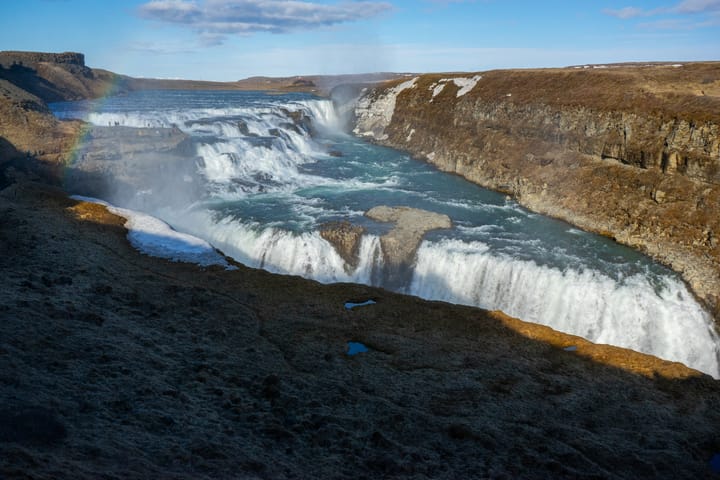

Comments ()